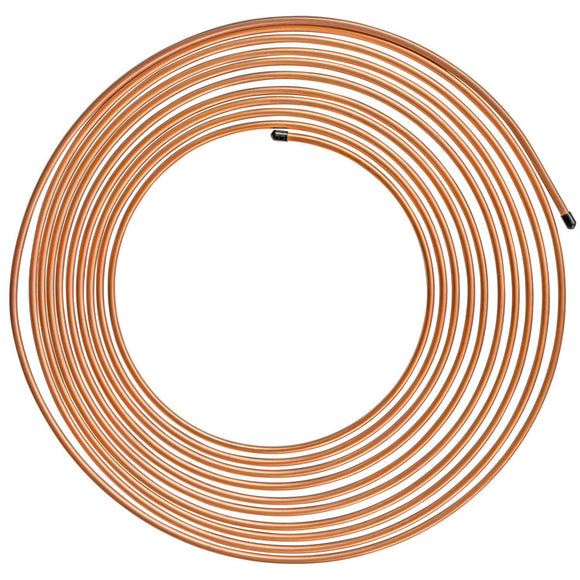
What Size Brake Line Do I Need?
What Size Brake Line Do I Need?
Brake lines are designed to last for the life of the car but we know that life doesn’t always work out that way. Leakage is the most common symptom that a car brake line needs to be replaced. Be sure to check out our Knowledge Garage for helpful tips on brake line replacement tips, such as 'When Is It Time For A Brake Line Repair?' Sometimes brake lines can collapse or bend because of a car accident. Other damage like holes and cracks can be caused by rocky roads or by hitting debris. Moisture and road salt can also create rust that eats through the line. Last but not least, brake fluid itself can corrode the line from the inside.
When a replacement line is needed, the obvious question is what size brake line to get. The answer is really pretty easy.
Almost every car or truck worldwide utilizes a 3/16-inch brake line, also referred to as a CNF-3.
The other most common brake line is the ¼ inch. This size was routinely used in the 1950s, so if your truck or car was manufactured in that era, you would need the ¼ inch. All other vehicles that have been manufactured since then should use the 3/16-inch brake line.
The size of the brake line is ultimately determined by the hydraulic system that the manufacturer used. Both sizes, 3/16" and 1/4", deliver the pressurized fluid equally so nothing would be gained by switching to the 1/4".
If you find yourself in a situation where custom brakes have been installed and you can’t determine the size of the brake line, there is a way to measure it in a few steps. You will need a caliper and your owner’s or shop's manual.
First, consult the owner’s manual. It should tell you the exact location of the master cylinder and the brake lines.
Second, clamp the caliper over a part of the brake line that you can access easily. Rotate the dial until the jaws close completely and snugly around the line.
Third, read the measurement on the caliper which should be in inches, millimeters, or sometimes both.
Finally, you might need to convert the measurement to find the right brake line size. Manufacturers typically use standard or metric measurements. If you need to convert inches into millimeters, multiply the measurement by 25.4. To convert millimeters into inches, divide the measurement by 25.4. Having both measurements with you when you go to 4LifetimeLines will prepare you to find the right brake line kit. Be sure to check out one of 4LifetimeLines newest products, RightQuick, which offers a correct complete replacement brake line for your vehicle's year, make, and model. Forget measuring and cutting your brake lines as each of the coils in this kit is cut to length for your vehicle. All kits use a 90-10 copper nickel brake line and are fitted with black oxide-coated fittings. Now, you're ready when asking, "What size brake lines does my vehicle need?"
The experts at 4LifetimeLines are always here to help you with all your automotive line replacement needs.

1 COMMENT
Great explanation. First time have heard this information. Thanks well done!